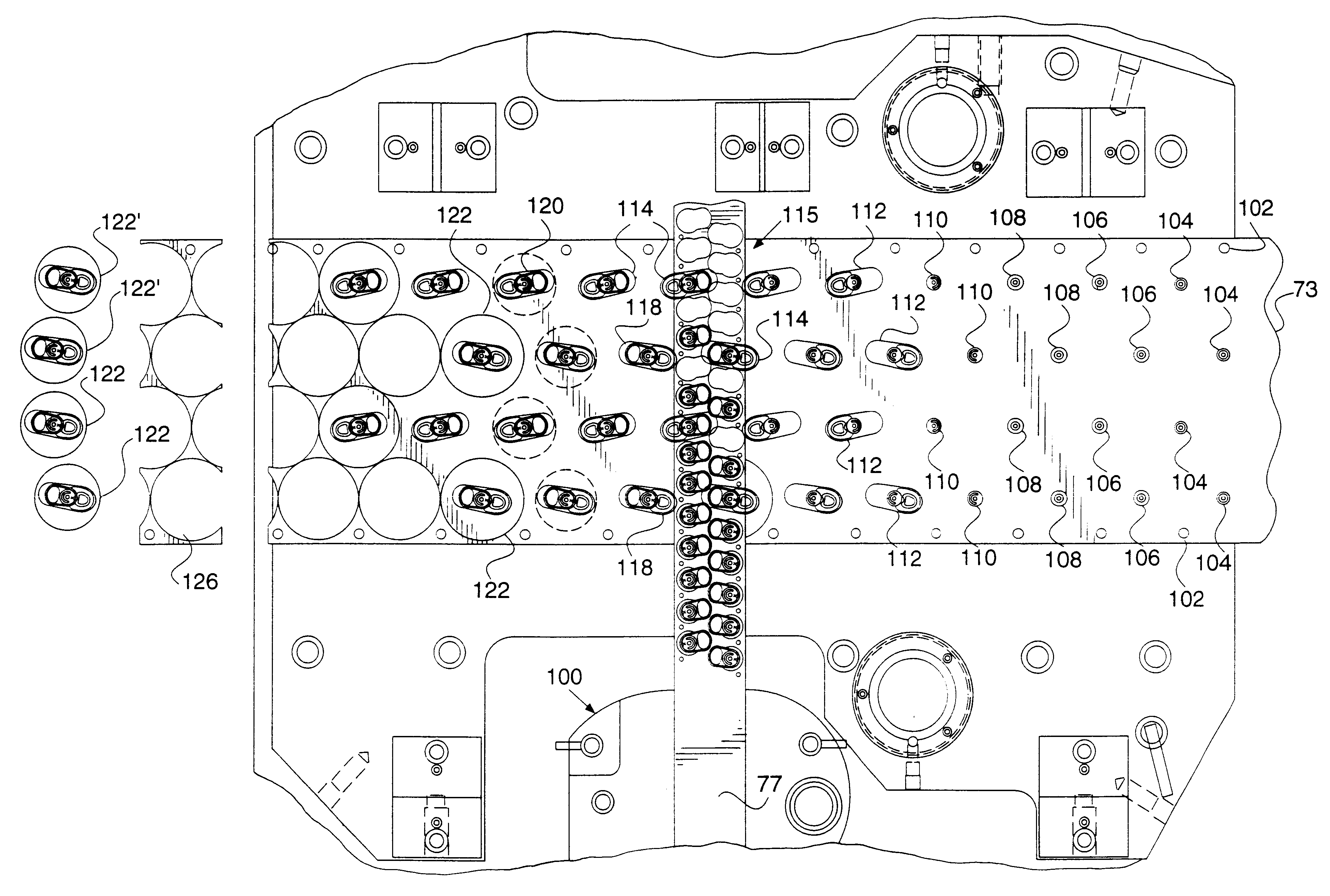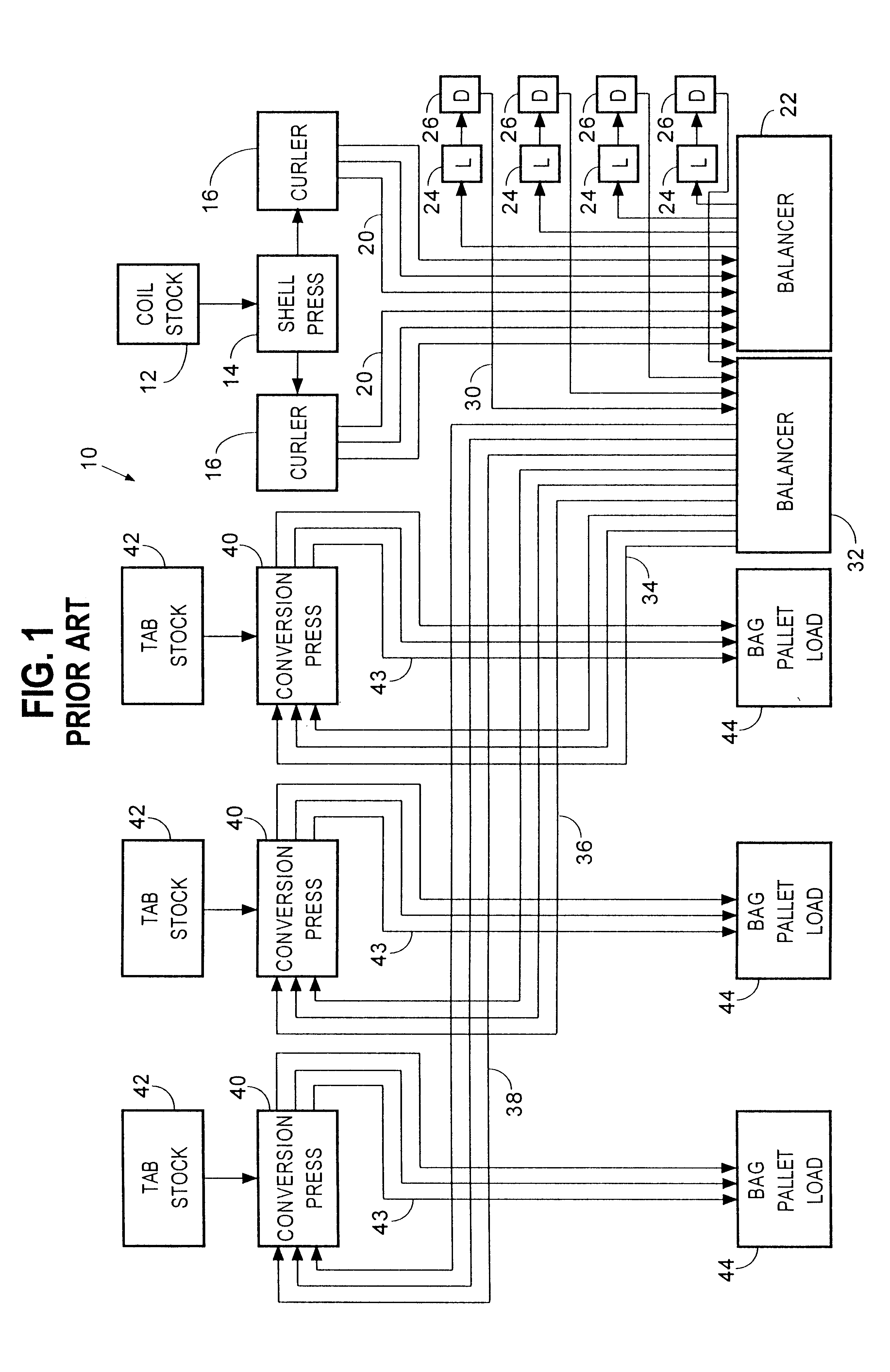Can end manufacturing system and press therefor
- Summary
- Abstract
- Description
- Claims
- Application Information
AI Technical Summary
Benefits of technology
Problems solved by technology
Method used
Image
Examples
Embodiment Construction
Referring now to FIGS. 2-4, a new can end manufacturing system 70 in accordance with a presently preferred embodiment of the invention will be described. Referring now in particular to FIGS. 2 and 3, the system 70 includes an end stock uncoiler 72 that supplies a continuous sheet 73 of end material, such as aluminum or steel, to a coil stock feed mechanism 72A, which supplies the sheet 73 to a press 74. Similarly, a tab stock uncoiler 76 supplies a continuous sheet 77 of tab stock to the press 74. The press 74 is shown in greater detail in FIGS. 3 and 4 and will be described in detail below. Basically, the press 74 consists of a plurality of work stations that perform various forming operations on the sheet 73 of end material, the details of which will be dictated by customer requirements, and completes the formation of the ends in the sheet of end material. Simultaneously, the press 74 has work stations that continuously form tabs in the sheet 77 of tab stock, in known fashion. One...
PUM
 Login to View More
Login to View More Abstract
Description
Claims
Application Information
 Login to View More
Login to View More - R&D
- Intellectual Property
- Life Sciences
- Materials
- Tech Scout
- Unparalleled Data Quality
- Higher Quality Content
- 60% Fewer Hallucinations
Browse by: Latest US Patents, China's latest patents, Technical Efficacy Thesaurus, Application Domain, Technology Topic, Popular Technical Reports.
© 2025 PatSnap. All rights reserved.Legal|Privacy policy|Modern Slavery Act Transparency Statement|Sitemap|About US| Contact US: help@patsnap.com



